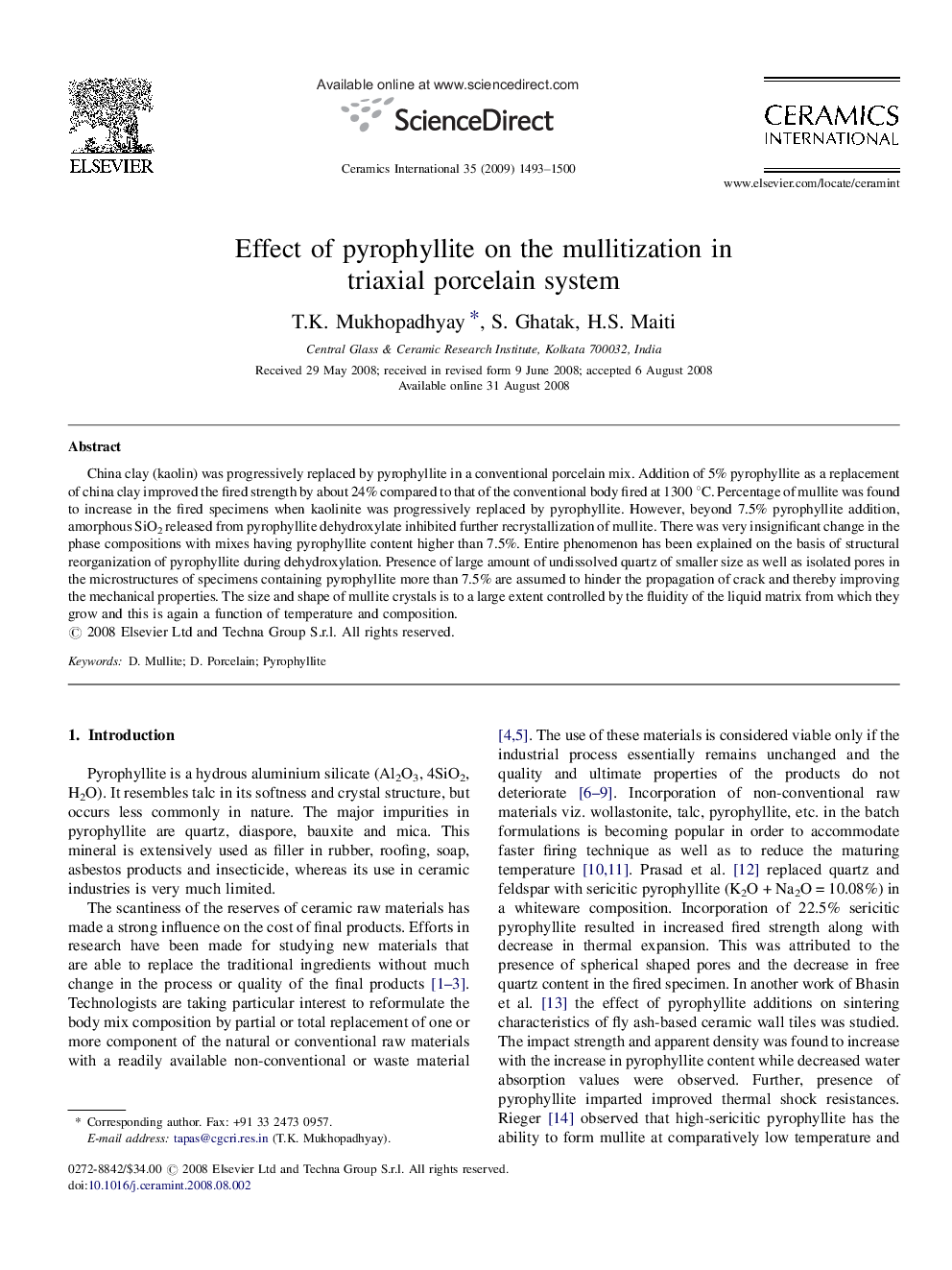| Article ID | Journal | Published Year | Pages | File Type |
|---|---|---|---|---|
| 1465317 | Ceramics International | 2009 | 8 Pages |
China clay (kaolin) was progressively replaced by pyrophyllite in a conventional porcelain mix. Addition of 5% pyrophyllite as a replacement of china clay improved the fired strength by about 24% compared to that of the conventional body fired at 1300 °C. Percentage of mullite was found to increase in the fired specimens when kaolinite was progressively replaced by pyrophyllite. However, beyond 7.5% pyrophyllite addition, amorphous SiO2 released from pyrophyllite dehydroxylate inhibited further recrystallization of mullite. There was very insignificant change in the phase compositions with mixes having pyrophyllite content higher than 7.5%. Entire phenomenon has been explained on the basis of structural reorganization of pyrophyllite during dehydroxylation. Presence of large amount of undissolved quartz of smaller size as well as isolated pores in the microstructures of specimens containing pyrophyllite more than 7.5% are assumed to hinder the propagation of crack and thereby improving the mechanical properties. The size and shape of mullite crystals is to a large extent controlled by the fluidity of the liquid matrix from which they grow and this is again a function of temperature and composition.
